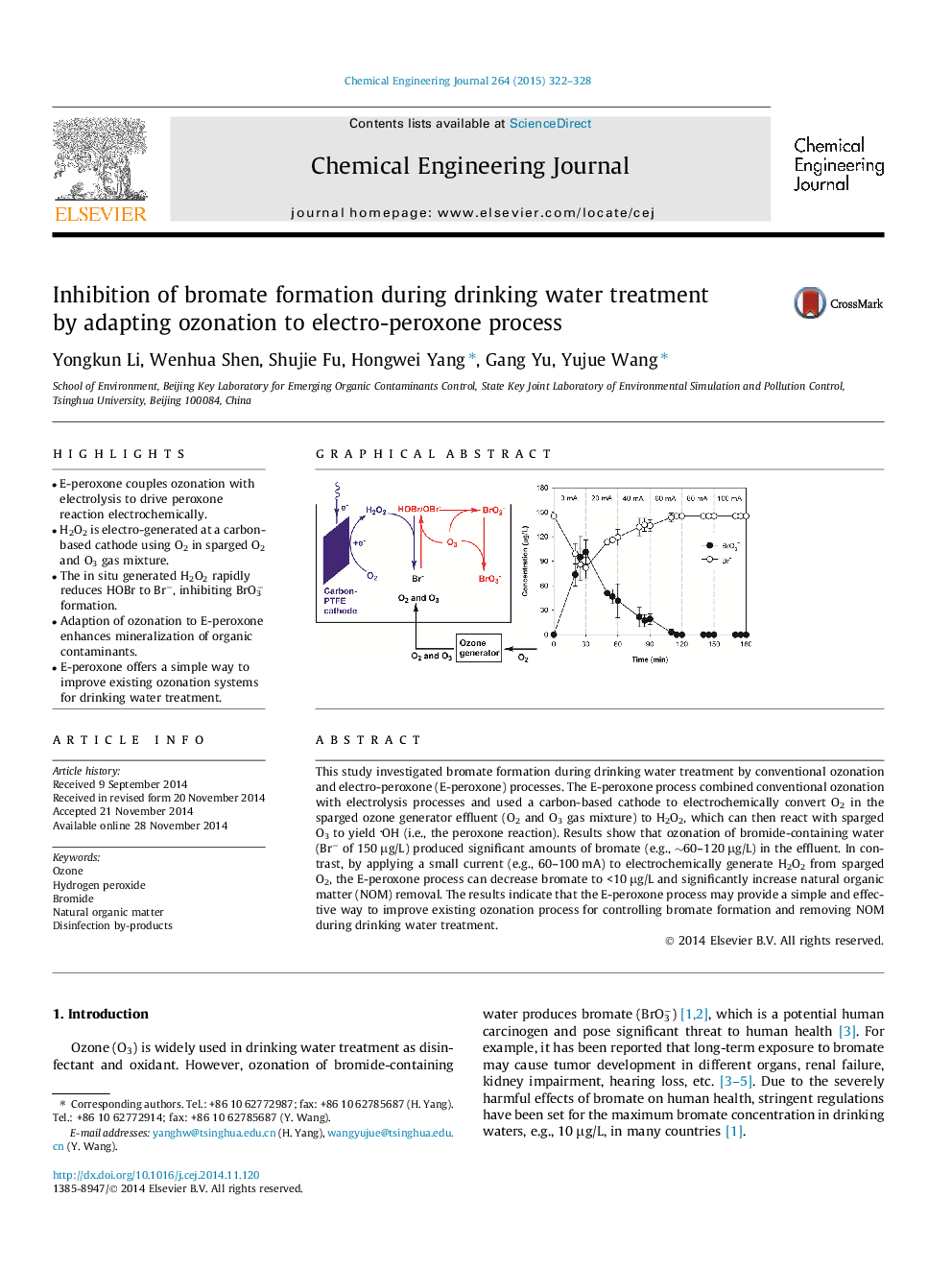| کد مقاله | کد نشریه | سال انتشار | مقاله انگلیسی | نسخه تمام متن |
|---|---|---|---|---|
| 146846 | 456379 | 2015 | 7 صفحه PDF | دانلود رایگان |
• E-peroxone couples ozonation with electrolysis to drive peroxone reaction electrochemically.
• H2O2 is electro-generated at a carbon-based cathode using O2 in sparged O2 and O3 gas mixture.
• The in situ generated H2O2 rapidly reduces HOBr to Br−, inhibiting BrO3− formation.
• Adaption of ozonation to E-peroxone enhances mineralization of organic contaminants.
• E-peroxone offers a simple way to improve existing ozonation systems for drinking water treatment.
This study investigated bromate formation during drinking water treatment by conventional ozonation and electro-peroxone (E-peroxone) processes. The E-peroxone process combined conventional ozonation with electrolysis processes and used a carbon-based cathode to electrochemically convert O2 in the sparged ozone generator effluent (O2 and O3 gas mixture) to H2O2, which can then react with sparged O3 to yield OH (i.e., the peroxone reaction). Results show that ozonation of bromide-containing water (Br− of 150 μg/L) produced significant amounts of bromate (e.g., ∼60–120 μg/L) in the effluent. In contrast, by applying a small current (e.g., 60–100 mA) to electrochemically generate H2O2 from sparged O2, the E-peroxone process can decrease bromate to <10 μg/L and significantly increase natural organic matter (NOM) removal. The results indicate that the E-peroxone process may provide a simple and effective way to improve existing ozonation process for controlling bromate formation and removing NOM during drinking water treatment.
Figure optionsDownload as PowerPoint slide
Journal: Chemical Engineering Journal - Volume 264, 15 March 2015, Pages 322–328
